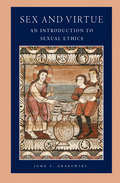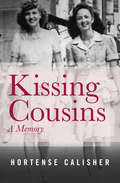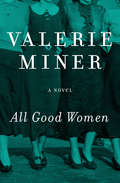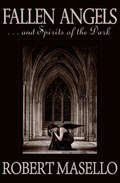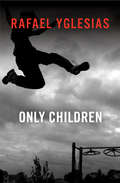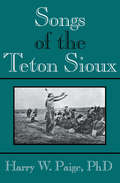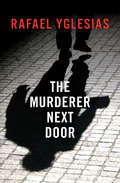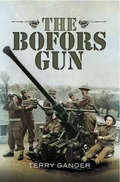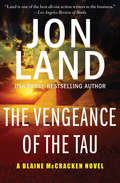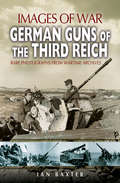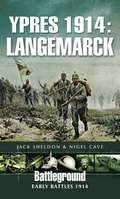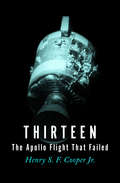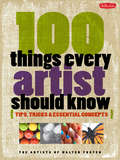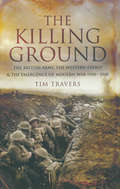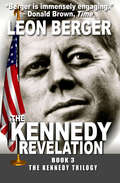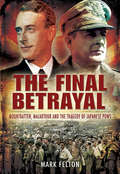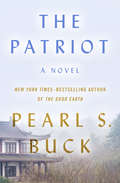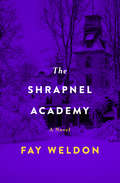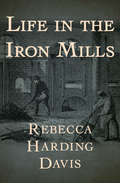- Table View
- List View
Sex and Virtue: An Introduction to Sexual Ethics (Catholic Moral Thought #2)
by John S. Grabowski&“Grabowski offers a compelling rationale for the virtue of chastity that takes into account the sensibilities and challenges of the contemporary world&” (Raymond Dennehy, Professor Emeritus, University of San Francisco). &“A welcome addition to an often contentious literature,&” Sex and Virtue provides a theological foundation for consideration of the moral dimensions of human sexuality from a Roman Catholic perspective (Catholic Books Review). In the hope of contributing to the ongoing renewal of moral theology sparked by the Second Vatican Council, John S. Grabowski discusses the systemic application of biblical and virtue-based categories on the topic of sexuality. A number of issues are examined including: the historical setting regarding attitudes and practices concerning sexuality; key biblical, historical, and contemporary resources for articulating a virtue-based approach to sexual ethics; current issues with which such an approach must wrestle; and some description of how to foster growth in moral virtue, particularly chastity. Ultimately, Sex and Virtue offers a compelling vision of human sexuality in the light of Christian faith that can provide a viable alternative to dominant cultural ideologies that trivialize sex and concrete practices that can enable growth in moral freedom. &“Sex and Virtue is a splendid result of Grabowski&’s response to the call of Vatican II to find scriptural support for Catholic moral teaching. The ecumenical potential of this book is tremendous; Christians can only marvel at the resources in scripture for establishing sexual morality—a morality that puts sexuality in service of love, life, and salvation.&” —Janet E. Smith, former professor of moral theology, Sacred Heart Major Seminary of Detroit
Kissing Cousins: A Memory
by Hortense CalisherHortense Calisher&’s evocative memoir bristles with intelligence and youthful inquiryKissing Cousins recalls the author as a teenager: peppy, earnest, and a bit self-important. Hortense Calisher documents her family&’s surprising history as Southern Jews adrift in New York. Finding her new city and school boorish, the young Calisher takes solace in the enduring friendship she develops with Katie Pyle, a gregarious nurse turned &“kissing cousin&” fifteen years Calisher&’s senior. Katie, an unmarried woman, possesses her own secret, depicted here with a novelist&’s touch for the dramatic. Kissing Cousins tackles matters of aging, life, and death with the sensitivity and eloquence readers have come to expect from Hortense Calisher.
Gifts of an Eagle: The Remarkable Story of a Bird and Her Family
by Kent DurdenNew York Times Bestseller: The &“extraordinary&” true story of a golden eagle adopted by a California ranching family, and how she changed their lives (Delia Ephron). In 1955, Ed Durden brought a baby golden eagle home to his ranch in California, where she would stay for the next sixteen years. As her bond with Ed and the Durden family grew, the eagle, named Lady, displayed a fierce intelligence and strong personality. She learned quickly, had a strong mothering instinct (even for other species), and never stopped surprising those who cared for her. An eight-week New York Times bestseller, Gifts of an Eagle is a fascinating up-close look at one of the most majestic creatures in nature, as well as a heartwarming family story and &“an affectionate, unsentimental tribute&” (Kirkus Reviews).
All Good Women: A Novel
by Valerie MinerAs World War II rages abroad, a group of women forge the bonds of sisterhood in AmericaIn 1938, while tensions in Europe are reaching a boiling point, four young women with big ambitions enter secretarial school in San Francisco. Motivated to attain the financial stability that eluded their parents, they go to battle for their futures. Moira, of Scottish descent, dreams of being an actress. Ann yearns for the education her Jewish immigrant parents provided for her brother, but not for her. Japanese American Wanda experiences firsthand the racial injustices running rampant in the United States. And Teddy, who left the Dust Bowl for sunny California, comes to startling realizations about herself as the war progresses. These women will be both buoyed and challenged by their dreams, experiencing love, loss, and everything in between. Against the backdrop of a nation gripped by fear and paranoia, Miner eloquently captures the spirit of wartime on the home front.
Fallen Angels: . . . And Spirits of the Dark
by Robert Masello&“My name is Legion: for we are many.&” —Mark 5:9 They have been with us since the beginning of time. Walking the centuries in our myths, our art, our literature . . . and in our dreams. Victims of temptation and sin, they are spirits who fell from heaven&’s grace, emerging anew as servants of darkness. Here, in one spellbinding volume, are the most infamous denizens of the Underworld—from Lucifer, the first angel who challenged God&’s will, to the fathomless legions of demons and fiends who haunt us to this day. Explore their world, hear their stories, unravel their secrets, and discover for yourself that even angels can have a dark side . . .
Only Children
by Rafael YglesiasA loving satire of new parenthood and its attendant joys and blunders from a master of contemporary American fictionThe Golds and the Hummels live in the same wealthy Manhattan neighborhood, but as both couples prepare for the arrival of their first child, they share little in terms of parenting philosophy. The Golds plunge into natural birth without bothering to first set up a nursery. The Hummels schedule a C-section and fill out hospital admissions paperwork weeks in advance. Both couples, however, are grappling with the transformations they know parenthood will immediately bring. Set in a milieu of material excess and limitless ambition, Only Children skewers new parents who expect perfect lives, but also offers an intimate look at the trials all new parents face as they learn how to nurture. This ebook features a new illustrated biography of Rafael Yglesias, including rare photos and never-before-seen documents from the author&’s personal collection.
Songs of the Teton Sioux
by Harry W. PaigeThe beautiful and mysterious song of the Sioux is a carefully crafted and highly individualized ritual performed to invoke the strength of the spirits in order to harness the power of nature. In this, the first literary study of a fascinating tradition, Dr. Harry W. Paige immerses himself in the Sioux society and culture to unlock the mystery of this enchanting ritual. Passionate and intoxicating, Songs of the Teton Sioux will astound and fascinate scholar and casual reader alike. The voice of their people may be fading, but the powerful songs of the Sioux will live on forever.
The Murderer Next Door
by Rafael YglesiasTo protect the child she loves, Molly Gray must cooperate with a killer in this critically acclaimed novel from a master of contemporary American fiction Molly Gray never trusted Ben Fleiss, her best friend Wendy&’s abusive husband. When Wendy&’s broken body is found in a dumpster, Molly is devastated—and knows exactly who the killer is. But as viscerally as Molly hates Ben, she loves Ben and Wendy&’s seven-year-old child, Naomi. While awaiting trial, Ben retains custody of his daughter, and Molly soon realizes the only way to keep Naomi safe is to stay as close to Ben as possible—even if it means consoling and flattering the man who murdered her friend. Yglesias&’s most suspenseful work, The Murderer Next Door is rich with startling twists and revelations hinged to uncanny psychological insight. This ebook features a new illustrated biography of Rafael Yglesias, including rare photos and never-before-seen documents from the author&’s personal collection.
Collected Poems: Water Walker and 19 Masks for the Naked Poet
by Nancy WillardThe lyrical poems of award-winning author Nancy Willard celebrate the magic of life Nancy Willard, who was the first recipient of a Newbery Medal for a volume of poetry, displays her versatility in these companion collections.Divided into five sections, Water Walker blends the mundane with the mystical. From sleeping fish to Marco Polo to a tortoise who dispenses unique advice to a bride on her wedding day, these poems integrate fables, nursery rhymes, hymns, and songs.In 19 Masks for the Naked Poet, the human soul reveals itself, as we remove the disguises that bind (and blind) us to everyday life. Fanciful images of nature—dozing bees, green lions—infuse this collection. Doors become mirrors and husbands float above their marital beds as Willard explores themes of family, love, spirituality, politics, and immortality. Her &“poet&” experiences everything from the sacred to the profane, from photographing his heart to meeting God in creations that are enchanting and surreal. This ebook includes illustrations by Regina Shekerjian.
The Bofors Gun
by Terry GanderThe definitive history of this enduring and versatile anti-aircraft weapon, including many photos and drawings. The 40mm Bofors gun, first produced in the 1930s, has become one of the most famous artillery pieces of all time. It shows no sign of fading from the defense scene as, in the second decade of the twenty-first century, it performs in many roles that were not contemplated by its original designers. It has also proven to be so versatile that it is now allied to electronic and other technological marvels that were mere pipe dreams only a few years ago. When the Bofors entered the international defense market, its primary quarry, the military aircraft, was still a slow and fragile machine that could be terminally damaged by a single hit from a 40mm projectile. Terry Gander describes this early period in the gun&’s development and he shows how, despite recent increases in target speed and other performance parameters, it can still inflict a one-hit kill on almost any aircraft, helicopter or guided missile. Perhaps the most astonishing aspect of the story is that the fundamentals of today&’s Bofors guns remain virtually unchanged from the very first examples to come off the Karlskoga production line in Sweden. In all its forms, the Bofors continues to be a sound, reliable, and lethal piece of military hardware that has given good service to gunners all over the world. Terry Gander&’s comprehensive account of the history of this remarkable weapon over the course of almost eighty years is fascinating reading and an invaluable work of reference for military historians and artillery specialists alike.
The Vengeance of the Tau: The Omicron Legion And The Vengeance Of The Tau (The Blaine McCracken Novels #5)
by Jon LandIn Egypt, Blaine McCracken tracks down a secret society whose ancient weapon threatens the entire world Far beneath the sands of Alexandria, an archaeological team digs deeper than anyone has before, seeking an ancient power older than the pyramids. What they unearth is an evil that threatens the whole world. First it targets the worst of humanity: Ex-Nazis, Central American warlords, and the pushers who peddle drugs to children are found massacred, ripped limb from limb without having fired a shot in their own defense. But the next to die will be ordinary people. An insidious secret organization, the Tau, attempts to harness the vicious force as part of a plan for world domination. But Blaine McCracken is on their trail. The rogue American op has fought the worst men in the world, and he now faces something the likes of which he has never imagined. This ebook features an illustrated biography of Jon Land including rare photos from the author&’s personal collection.
German Guns of the Third Reich: Rare Photographs from Wartime Archives (Images of War)
by Ian Baxter"German Guns of the Third Reich is an illustrated record of German light and heavy artillery, heavy mortars, anti-tank and anti-aircraft guns at war. Using previously unpublished photographs, many of which have come from the albums of individuals who took part in the war, it presents a unique visual account of the various German guns that were deployed for action between 1939 and 1945.The book analyses the development of the German gun at war and shows how it became of decisive importance for the preparation and the successful conduct of atta and defense. It describes how German forces carefully built up their assault forces utilizing all available guns and making into an effective killing machine. It shows how various Panzerjger and Panzergrenadier units fought on the battlefield using a host of antitank guns with lethal effect. Throughout the book it depicts life as a gunner, how the guns were deployed for action, and illustrates the various modes of transport that were used to move the guns from one battle front to another. Each chapter details the various guns that went into production and eventually saw action on the battlefield. "
Ypres 1914: Langemarck (Battleground Early Battles 1914)
by Nigel Cave Jack SheldonThese three Battleground Europe books on Ypres 1914 mark the centenary of the final major battle of the 1914 campaign on the Western Front. Although fought over a relatively small area and short time span, the fighting was even more than usually chaotic and the stakes were extremely high. Authors Nigel Cave and Jack Sheldon combine their respective expertise to tell the story of the men British, French, Indian and German - who fought over the unremarkable undulating ground that was to become firmly placed in British national conscience ever afterwards.When, in October 1914, the newly created German Fourth Army attacked west to seize crossings over the Yser, prior to sweeping south in an attempt to surround the BEF, two things prevented it. To the north, it was the efforts of the Belgian army, reinforced by French troops, coupled with controlled flooding of the polders but, further south, the truly heroic defence of Langemarck, for three days by the BEF and then by the French army, was of decisive importance. The village stood as a bulwark against any further advance to the river or the town of Ypres. Here the German regiments bled to death in the face of resolute Allied defence and any remaining hope of forcing a decision in the west turned to dust.
Thirteen: The Apollo Flight That Failed
by Henry S. Cooper Jr.An &“exciting&” minute-by-minute account of the Apollo 13 flight based on mission control transcripts from Houston (The New York Times). On the evening of April 13, 1970, the three astronauts aboard Apollo 13 were just hours from the third lunar landing in history. But as they soared through space, two hundred thousand miles from Earth, an explosion badly damaged their spacecraft. With compromised engines and failing life-support systems, the crew was in incomparably grave danger. Faced with below-freezing temperatures, a seriously ill crewmember, and a dwindling water supply, a safe return seemed unlikely.Thirteen is the shocking and miraculous true story of how the astronauts and ground crew guided Apollo 13 back to Earth. Expanding on dispatches written for the New Yorker, Henry S. F. Cooper Jr. brings readers unparalleled detail on the moment-by-moment developments of one of NASA&’s most dramatic missions.
100 Things Every Artist Should Know: Tips, Tricks & Essential Concepts
by The Artists of Walter FosterAn educational and inspirational journey in drawing, painting, and other artistic mediums—from basic pastel techniques to color theory and perspective.What's the best way to stretch watercolor paper? What basic materials do I need to start oil painting? How can I use color to create mood in my paintings? You'll find answers to these questions and much more in 100 Things Every Artist Should Know.This broad book aims to equip and inspire beginners with fundamental art knowledge, as well as provide a refresher course for more experienced artists. Readers can discover or re-discover essential concepts, tips, and techniques distilled into a collection of one hundred instructional entries by a range of Walter Foster authors.From lessons on value and color theory to helpful shortcuts, this book seeks to cover it all!
The Killing Ground: The British Army, The Western Front & The Emergence of Modern War 1900–1918
by Tim TraversA study of how the British Army fought on the Western Front during World War I.This books explains why the British Army fought the way it did in the First World War. It integrates social and military history and the impact of ideas to tell the story of how the army, especially the senior officers, adapted to the new technological warfare and asks: Was the style of warfare on the Western Front inevitable?Using an extensive range of unpublished diaries, letters, memoirs and Cabinet and War Office files, Professor Travers explains how and why the ideas, tactics and strategies emerged. He emphasises the influence of pre-war social and military attitudes, and examines the early life and career of Sir Douglas Haig. The author’s analysis of the preparations for the Battles of the Somme and Passchendaele provide new interpretations of the role of Haig and his GHQ, and he explains the reasons for the unexpected British withdrawal in March 1918. An appendix supplies short biographies of senior British officers. In general, historians of the First World War are in two hostile camps: those who see the futility of lions led by donkeys on the one hand and on the other the apologists for Haig and the conduct of the war. Professor Travers’ immensely readable book provides a bridge between the two.
The Kennedy Revelation: The Kennedy Imperative, The Kennedy Momentum, And The Kennedy Revelation (The Kennedy Trilogy #3)
by Leon BergerDallas, 1963: In the immediate aftermath of the JFK assassination, the shock is multiplied for young CIA agent Philip Marsden when he learns of the death of his Cuban American wife. As evidence builds and the threats begin to mount, he discovers that the two tragedies might not be unrelated.
Long Summer Day (A Horseman Riding By #1)
by R. F. DelderfieldA great read for fans of PBS&’s Poldark and Downton Abbey—first in the saga of a man returning from battle to an estate in the pre-WWI English countryside. After serving his country in the Boer War, injured Lieutenant Paul Craddock returns to England to resume civilian life. But things have changed since he joined the Imperial Yeomanry three years ago. His father has died, leaving Paul as heir to a scrap metal business he has no intention of continuing. Instead, he purchases an auctioned-off thirteen-hundred-acre estate in a secluded corner of Devon. Neglected and overgrown, Shallowford becomes the symbol of all that Paul has lost—and a reminder of the gentle place his homeland once was. And here, on this sprawling stretch of land, he will be changed by his love for two women: fiercely independent Grace Lovell, and lovely, demure Claire Derwent. Set in the English countryside in the first part of the previous century—from the long &“Edwardian afternoon&” following the death of Queen Victoria, to the gathering storm of World War I—Long Summer Day is the story of a man, his family, and a people struggling to adapt to life in a new world. Long Summer Day is the first novel in R. F. Delderfield&’s saga A Horseman Riding By, which continues with Post of Honour and The Green Gauntlet.
The Sleeper: A Novel
by Gillian WhiteThe sins of the past haunt an isolated farmhouse as a snowstorm rages outside . . . It&’s not shaping up to be a very merry Christmas. Clover Moon feels trapped in her life as a farmer&’s wife. She certainly doesn&’t enjoy hosting Fergus&’s mother, Violet, who always finds new ways to publicly humiliate her unsatisfactory daughter-in-law. But would Violet ever seek a more violent way of expressing her disapproval? Violet is a medium, and the voices of the dead sometimes encourage her to do disturbing things. During her stay at the farmhouse, she claims to sense an intrusive presence. Fergus then discovers the dead body of a woman floating in their flooded cellar, and elderly Miss Bates, resident of a nearby senior home and a client of Violet&’s, is missing . . . With her acute sense of human nature and gift for suspense, reminiscent of Barbara Vine, Gillian White will leave you guessing until the very end.
The Final Betrayal: MacArthur and the Tragedy of Japanese POWs
by Mark FeltonThis book examines the period between the unconditional surrender of Japan on 14 August 1945, and the arrival of Allied liberation forces in Japanese-occupied territories after 2 September 1945. The delay handed the Japanese a golden opportunity to set their house in order before Allied war crimes investigators arrived. After 14 August groups of Allied POWs were brutally murdered. Vast amounts of documentation concerning crimes were burned ahead of the arrival of Allied forces. POW facilities and medical experimentation installations were either abandoned or destroyed. Perhaps the greatest crimes were continuing deaths of Allied POWs from starvation, disease and ill-treatment after the Japanese surrender. The blame rests with the American authorities, and particularly General MacArthur, Supreme Allied Commander in the Pacific. MacArthur expressly forbade any Allied forces from liberating Japanese occupied territories before he had personally taken the formal Japanese surrender aboard the USS Missouri in Tokyo Bay on 2 September 1945. Vice Admiral Lord Mountbatten, Commanding Allied forces in Southeast Asia, protested against this policy, believing that pandering to MacArthurs vanity and ego would mean condemning many starving and sick prisoners to death. Deaths among British and Commonwealth POWs were significant as opposed to American POWs who were already largely liberated in the Philippines and elsewhere.
Family Memories: An Autobiographical Journey
by Rebecca WestPublished posthumously, this wise and entertaining family history and memoir offers keen insight into the origins of Rebecca West and her work Working on Family Memories for over twenty years, West set out to narrate the story of her mother&’s, father&’s and husband&’s unique and talented families. As in her novels, the richly drawn characters of her heritage and childhood traverse a diverse landscape, from Scotland to Australia to Africa, encountering love, loss, and a panoply of challenges. Although fans will recognize many settings, characters, and themes from her novels, West&’s exploration of her family stands on its own as an engaging narrative. Told with her compelling voice, West&’s chronicles reflect not only the importance of family to identity, but to the way one relates to the larger world.
The Patriot: A Novel
by Pearl S. BuckA Chinese dissident is torn between love and country in this novel from the New York Times–bestselling author of The Good Earth. When Wu I-wan starts taking an interest in revolution, trouble follows: Winding up in prison, he becomes friends with fellow dissident En-lan. Later, his name is put on a death list and he&’s shipped off to Japan. Thankfully, his father, a wealthy Shanghai banker, has made arrangements for his exile, putting him in touch with a business associate named Mr. Muraki. Absorbed in his new life, I-wan falls in love with Mr. Muraki&’s daughter, and must prove he is worthy of her hand. As news spreads of what the Japanese army is doing back in China, I-wan realizes he must go back and fight for the country that banished him.The Patriot is an engrossing story of revolution, love, and reluctantly divided loyalties by the Nobel Prize–winning author renowned for her novels set in Asia and informed by the sweep of history, including the New York Times bestsellers The Living Reed and The Hidden Flower. This ebook features an illustrated biography of Pearl S. Buck including rare images from the author&’s estate.
The Game Player
by Rafael YglesiasThis critically acclaimed novel from a master of contemporary American fiction is a story of genius, performance, and the psychological forces that drive the competitive spirit Brian Stoppard is blessed with prodigious natural talents. Howard Cohen, less so. Starting in middle school in New York, Howard watches Brian effortlessly win at everything he tries: He&’s a natural chess champion, a perfect athlete, a brilliant student. As the two move through life as friends and competitors, Brian&’s easy success is a constant source of envy, awe, and inspiration for the ambitious but less-gifted Howard. Told with great humor and style, The Game Player is a story of those born to greatness and those who must strive for it. This ebook features a new illustrated biography of Rafael Yglesias, including rare photos and never-before-seen documents from the author&’s personal collection.
The Shrapnel Academy: A Novel (Dales Large Print Ser.)
by Fay WeldonA weekend in the country erupts into a free-for-all of mutiny, sex, and murder On the anniversary of the Eve of the Battle of Waterloo, an assortment of unusual dinner guests gather at a remote country house to pay homage to Henry Shrapnel, inventor of the exploding cannonball. But all is not peaceful at the Shrapnel Academy: The downstairs servants, a group of third-world refugees led by a South African butler, are plotting to overthrow their upstairs oppressors. When a blizzard hits the countryside and traps everyone indoors, the rebellion erupts into bloody warfare throughout the Academy, &“a shrine to the ethos of military excellence.&” With characters that include a domineering female sergeant, a war-mongering general, a brain-damaged spy, and an idiot-savant arms dealer, Fay Weldon gives us a country house novel replete with sexual atrocity and class warfare. No one will emerge unscathed in this stinging tale of modern-day barbarians, where the deadliest weapons are the ever-raging battles between the haves and the have-nots.
Life in the Iron Mills (Xist Classics Ser.)
by Rebecca Harding DavisA shocking rendering of poverty, tragedy, and desperation in the American North This shocking depiction of the lives of impoverished Welsh miners in the American North was one of the first novels to expose the brutal realities facing the nation&’s poor. Rebecca Harding Davis casts an unflinching gaze into the lives of the destitute, drunk, and desperate in a work that was controversial for its honesty, but popular for its adept storytelling. The story follows Hugh Wolfe, a proud and educated yet desperately poor laborer in an iron mill, and his cousin Deborah, who breaks the law for a chance at a better life for Hugh. If they keep the ill-gotten money, the pair could transcend their hardship, and Hugh could become the talented artist he was born to be; however, keeping the money would mean sacrificing the morals they&’ve so stridently adhered to all their lives. First published in 1861, Life in the Iron Mills became notorious for its merciless descriptions of underclass suffering. As relevant today as it was in the nineteenth century, this is a classic, hypnotic tragedy. This ebook has been professionally proofread to ensure accuracy and readability on all devices.
